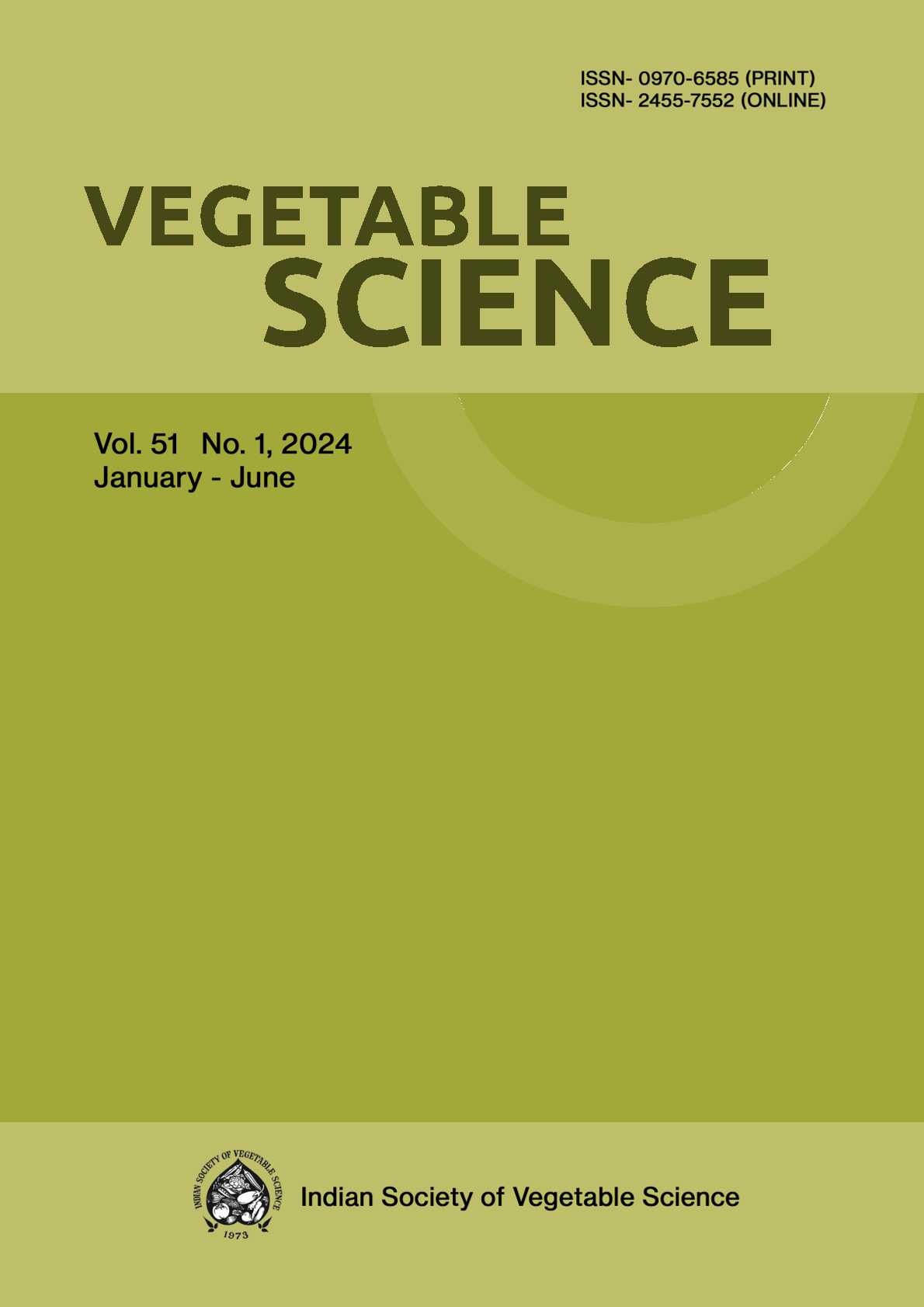Effect of paddy straw mulch, irrigation regimes and nitrogen levels on the performance of spring transplanted bell pepper in semi-arid environment of South-Western Punjab
DOI:
https://doi.org/10.61180/vegsci.2020.v47.i1.13Keywords:
Mulching, Irrigation, Bell pepper, Capsaicin, Water use efficiencyAbstract
A 4-years study was conducted to investigate the effect of
three irrigation levels (I1= IW/CPE=0.6, I2=0.9, I3=1.2) and
three nitrogen levels (N1=100 kg/ha, N2=125 kg/ha, N3=150
kg/ha) on growth, yield, quality and water use efficiency
(WUE) of spring transplanted bell pepper with paddy straw
mulching (PSM) @ 6 t/ha (M1) vis-à-vis without mulching
(M0). Significantly higher fruit yield was recorded with
higher number of irrigations (I3) as compared to I1 and I2
levels. The fruit yield under M0I3 was statistically at par
with that under M1I2 implying saving of 5-7 irrigations by
using PSM. Low nitrogen fertilization with PSM (N1M1)
yielded at par with higher nitrogen fertilization without
mulching (N3M0) revealing that 50 kg N/ha may be saved by
using PSM. The dry matter, ascorbic acid and chlorophyll
(a, b and total chlorophyll) in fruits harvested from M1 plots
were higher than those from M0 plots whereas, the capsaicin
content in fruit was 14.6% lower in M1 plots than those from
bare soil. The dry matter, vitamin C and chlorophyll (a, b and
total) in fruits were the lowest in I1 and the highest values
were recorded in I3 whereas the capsaicin content exhibited
the contrary trend. A significant increase in fruit dry matter,
ascorbic acid and chlorophyll (a, b and total); and a decrease
in capsaicin content was observed with increase in nitrogen
dose from 100 kg/ha to 150 kg/ha. Water use (WU) was
slightly higher under M0 as compared to M1 plots, whereas,
the WUE and profile water use (PWU) were higher in M1
than in M0 plots. The WU and PWU exhibited an increasing
trend with increasing frequency of irrigation whereas the
WUE showed a decreasing trend. The WU and WUE values
were the highest at N3 and the lowest at N1 level. The organic
carbon, available nitrogen, phosphorus and potassium
content of surface soil (0-15 cm) increased with PSM than
those in bare soil.
Downloads
Published
Issue
Section
License

This work is licensed under a Creative Commons Attribution-NonCommercial-NoDerivatives 4.0 International License.






